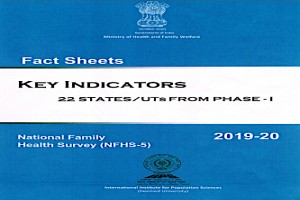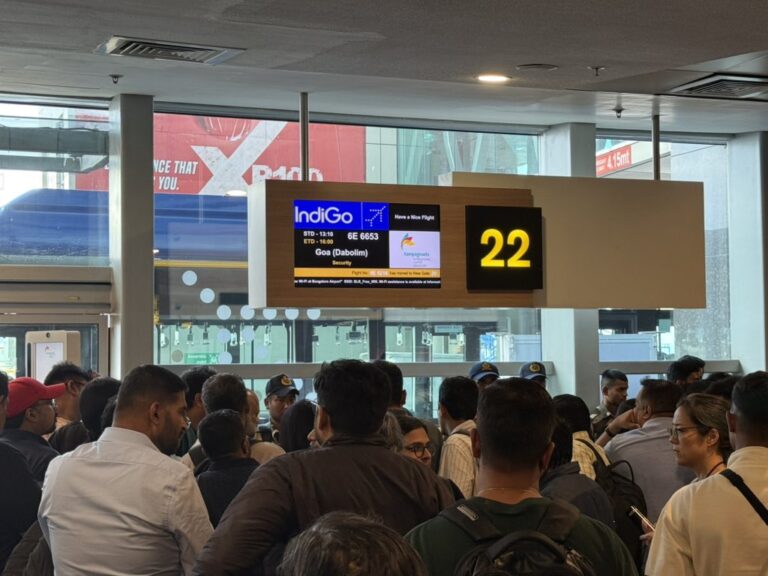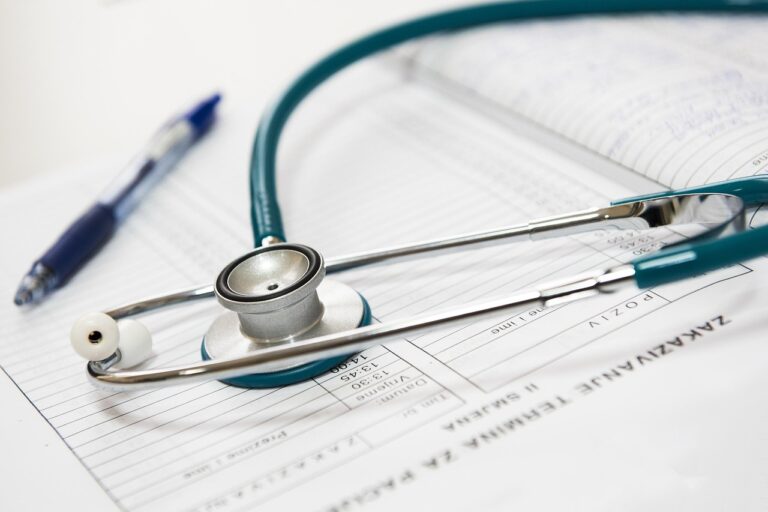
New Delhi: The National Family Health Survey 2019-20 (NFHS-5) reveals that anaemia among women and children continues to be a cause of concern. More than half of the children and women are anaemic in 13 of the 22 States/Union Territories surveyed. It observes that anaemia among pregnant women has increased in half of the states and UTs compared to NFHS-4, in spite of substantial increase in the consumption of iron-folic acid (IFA) tablets by pregnant women for 180 days or more.
The factsheets of key indicators on population, reproductive and child health, family welfare, nutrition and others for 22 States/UTs of the first Phase of the 2019-20 NFHS-5 survey, was released here on December 12 – the Universal Health Coverage Day. These 22 Phase-I States/UTs are Andhra Pradesh, Assam, Bihar, Goa, Gujarat, Himachal Pradesh, Karnataka, Kerala, Maharashtra, Manipur, Meghalaya, Mizoram, Nagaland, Sikkim, Telangana, Tripura, West Bengal, Andaman Nicobar Island, Dadra and Nagar Haveli and Daman and Diu, Jammu & Kashmir, Ladakh and Lakshadweep. The fieldwork in the remaining 14 (Phase-II) States/UTs is currently under progress.
The Survey further finds that for both women and men, there is a lot of variation in the high or very high random blood glucose levels across States/UTs. Men are more likely to have slightly higher blood glucose levels in the range of high or very high compared to women. The percentage of men with high or very high blood glucose is highest in Kerala (27%) followed by Goa (24%). Prevalence of elevated blood pressure (hypertension) among men is somewhat higher than in women.
Moreover, it finds the percentage of households with improved sanitation facility and clean fuel for cooking increasing in almost all the 22 States/UTs over the last four years (from 2015-16 to 2019-20). The use of cooking fuel has increased more than 10 percentage point in all the States and UTs during the last 4 years with over 25 percentage point increase in states of Karnataka and Telangana.
The NFHS-5, the fifth in the NFHS series, provides information on population, health, and nutrition for India and each state/union territory (UT). Like NFHS-4, NFHS-5 also provides district-level estimates for many important indicators. The contents of NFHS-5 are similar to NFHS-4 to allow comparisons over time. However, NFHS-5 includes some new topics, such as preschool education, disability, access to a toilet facility, death registration, bathing practices during menstruation, and methods and reasons for abortion. The scope of clinical, anthropometric, and biochemical testing (CAB) has also been expanded to include measurement of waist and hip circumferences, and the age range for the measurement of blood pressure and blood glucose has been expanded. However, HIV testing has been dropped.
Four survey schedules – Household, Woman’s, Man’s, and Biomarker – were canvassed using Computer Assisted Personal Interviewing (CAPI).
In the Household Schedule, information was collected on all usual members of the household and visitors who stayed in the household the previous night, as well as socio-economic characteristics of the household; water, sanitation, and hygiene; health insurance coverage; disabilities; land ownership; number of deaths in the household in the three years preceding the survey; and the ownership and use of mosquito nets.
The Woman’s Schedule covered a wide variety of topics, including the woman’s characteristics, marriage, fertility, contraception, children’s immunisations and healthcare, nutrition, reproductive health, sexual behaviour, HIV/AIDS, women’s empowerment, and domestic violence.
The Man’s Schedule covered the man’s characteristics, marriage, his number of children, contraception, fertility preferences, nutrition, sexual behaviour, health issues, attitudes towards gender roles, and HIV/AIDS.
The Biomarker Schedule covered measurements of height, weight, and haemoglobin levels for children; measurements of height, weight, waist and hip circumference, and haemoglobin levels for women age 15-49 years and men age 15-54 years; and blood pressure and random blood glucose levels for women and men age 15 years and over. In addition, women and men were requested to provide a few additional drops of blood from a finger prick for laboratory testing for HbA1c, malaria parasites, and Vitamin D3.
The key results from the State/UT factsheets are as follows:
- The Total Fertility Rates (TFR) has further declined since NFHS-4 in almost all the Phase-1 States and UTs. The replacement level of fertility (2.1) has been achieved in 19 out of the 22 States/UTs and only 3 states viz. Manipur (2.2), Meghalaya (2.9) and Bihar (3.0) have TFR above replacement levels now.
- Overall Contraceptive Prevalence Rate (CPR) has increased substantially in most States/UTs and it is the highest in HP and WB (74%). Use of modern methods of contraception has also increased in almost all States/UTs.
- Unmet needs of family planning have witnessed a declining trend in most of the Phase-1 States/UTs. The unmet need for spacing which remained a major issue in India in the past has come down to less than 10 per cent in all the States except Meghalaya and Mizoram.
- Full immunization drive among children aged 12-23 months has recorded substantial improvement across States/UTs/districts. More than two-third of children are fully immunized in all the States and UTs except Nagaland, Meghalaya and Assam. In almost three-fourths of districts, 70% or more children aged 12-23 months are fully immunized against childhood diseases.
- On comparing NFHS-4 and NFHS-5 data, the increase in full immunisation coverage is observed to be expeditious in many states and UTs; in 11 out of the 22 states/UTs, the increase was to the tune of over 10 percentage point and in another 4 states/UTs between 5 to 9 percentage point over the short span of 4 years. This can be attributed to the flagship initiative of Mission Indradhanush launched by the government since 2015.
- There is increase in the per cent of women receiving the recommended four or more ANC visits by health providers in many States/UTs. This percentage has increased in 13 States/UTs between 2015-16 to 2019-20.
- Institutional births have increased substantially with over four-fifth of the women delivering in institutions in 19 States and UTs. Institutional delivery is over 90 per cent in 14 out of the total 22 Sates and UTs. Almost 91% of districts recorded over 70% institutional deliveries of births in the 5 years preceding the survey.
- Along with an increase in institutional births, there has also been a substantial increase in C-section deliveries in many States/UTs especially in private health facilities.
- Sex ratio at birth has remained unchanged or increased in most States/UTs. Majority of the states are in normal sex ratio of 952 or above. SRB is below 900 in Telangana, Himachal Pradesh, Goa, DNH & DD.
- Child nutrition indicators show a mixed pattern across states. While the situation improved in many States/UTs, there has been minor deterioration in others. Drastic changes in respect of stunting and wasting are unlikely in a short period.
- Women’s empowerment indicators portray considerable improvement across all the States/UTs included in Phase 1. Considerable progress has been recorded between NFHS-4 and NFHS-5 in regard to women operating bank accounts. For instance, in the case of Bihar the increase was to the tune of 51 percentage point from 26 per cent to 77 per cent. More than 60 per cent of women in every state and UTs in the first phase have operational bank accounts.
– globalbihari bureau





